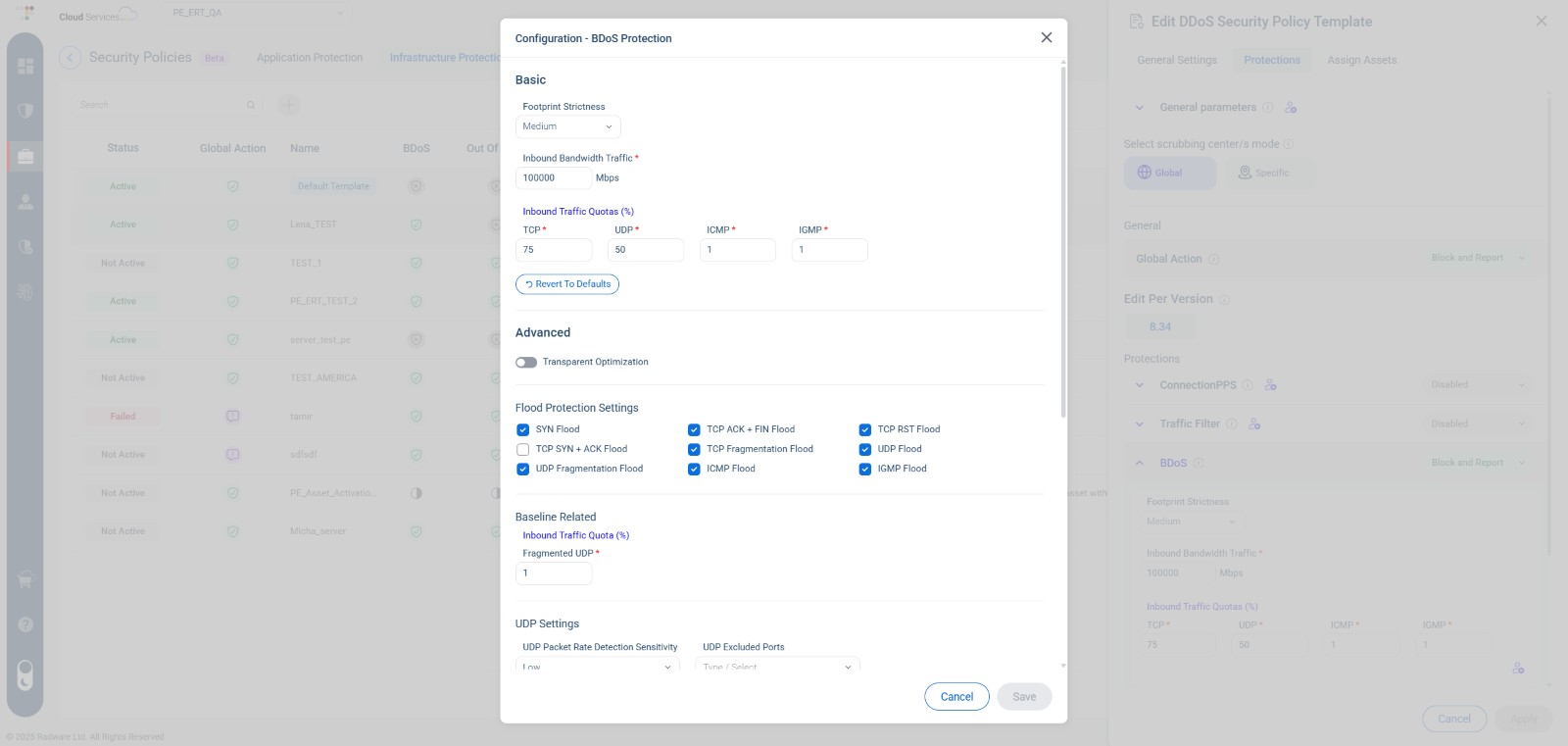Moving from Black Box to Transparent, Self-Service Control
Introduction
Managing DDoS security configurations across multiple assets has always been a balancing act - between efficiency, accuracy, and control. Operators working in large-scale environments must react quickly to threats, maintain configuration consistency across systems, and ensure that every policy change is applied safely and correctly. Until now, this process has often been manual, fragmented, and time-consuming.
With the introduction of Policy Editor, Radware is changing that. Currently available for operators and soon to be extended to customers, this new capability brings transparency, flexibility, and speed to the way DDoS protection policies are managed across the cloud environment.
The Challenge
In most cloud-based DDoS environments, managing security configurations is not a one-time task—it’s a continuous process. Threats evolve, traffic patterns shift, and defense policies need frequent fine-tuning to stay aligned with the latest intelligence.
Traditionally, this means handling configurations asset by asset, often across multiple mitigation devices. Even for well-trained SOC or NOC teams, it can take time to identify where changes are needed, execute them safely, and verify their impact. This approach limits scalability and extends mean time to resolution (MTTR).
Customers experience similar pain points, often relying entirely on operators for configuration adjustments. This dependency can create delays—especially during live attack scenarios where speed and control are critical.
What We’ve Built
Radware’s Policy Editor introduces a unified, scalable interface for managing security configurations efficiently and consistently. Instead of treating each asset as an isolated configuration point, Policy Editor allows operators to define, update, and synchronize policies across multiple assets simultaneously.
The system executes changes in parallel across backend mitigation devices, ensuring that updates are applied uniformly and instantly. This architecture reduces MTTR, eliminates repetitive manual steps, and helps maintain configuration integrity even at high scale.

Key Capabilities
- Scalable, Multi-Asset Management: Configure and apply changes to multiple assets at once, with full synchronization across Radware’s cloud mitigation devices.

- RBAC and Scrubbing Center (SC) Context Granularity: Manage policies per Scrubbing Center or geographic region, enabling more aggressive or fine-tuned mitigation where higher attack traffic is observed. This allows operators to optimize protection efficiency across locations while maintaining consistency in overall policy management. Role-Based Access Control (RBAC) ensures limited permissions for sensitive settings, providing secure and precise control in shared or complex environments.

- Default Templates and Best Practices: Every account includes a best-practice security template. New assets automatically inherit these default settings, ensuring consistent protection from day one.
- Customizable Configurations: Operators—and soon customers—can adjust configurations for specific assets. This is ideal for PoC setups, aggressive placeholders, or any asset requiring unique tuning.
- Parallel Execution and Validation: Policy updates are executed simultaneously across systems, with validation to confirm alignment and prevent misconfigurations.
Value for Operators
For operators, Policy Editor dramatically simplifies daily workflows. Tasks that previously required multiple interfaces, tickets, or manual coordination can now be completed in minutes from one central dashboard.
Operators can fine-tune policies across hundreds of assets in parallel, maintain consistent protection templates, and ensure best-practice compliance with minimal effort. This not only saves time but also reduces the risk of configuration drift or human error.
Coming Soon – Extending Control to Customers
In the next release phase, Policy Editor will be available directly to customers—marking a major shift in how they interact with Radware’s DDoS protection platform.
For the first time, customers will have direct access to manage and view their own protection policies. Those who choose self-service control will no longer need to wait in line for changes or approvals. They’ll be able to respond instantly, with full transparency into what’s configured and how each asset is protected.
This evolution moves customers from operating in a black box—where configuration details were hidden—to a model of transparent, self-service control, where they can make informed decisions and act independently when needed.
At the same time, customers who prefer a fully managed experience can continue relying on Radware’s experts. The platform’s flexibility ensures both models coexist seamlessly.
Enhanced Visibility and UI Experience
The Policy Editor introduces a modern, intuitive UI designed around clarity and efficiency. Users can see which assets share templates, where overrides exist, and what recent configuration changes were applied. Visual indicators show synchronization status and highlight pending updates, helping teams maintain confidence and control.
Operators will soon be able to drill down by Security Context, template, or asset to analyze policy alignment in real time. This visibility not only improves operational awareness but also strengthens collaboration between Radware’s teams and customers during live events.

Summary
Radware’s Policy Editor represents the next step in making DDoS protection more intelligent, scalable, and user-driven. It brings together automation, transparency, and self-service capabilities in a way that improves both operator efficiency and customer autonomy.
By moving from a black box to full visibility and self-service control, we’re redefining how DDoS policies are managed in the cloud—faster, safer, and smarter.